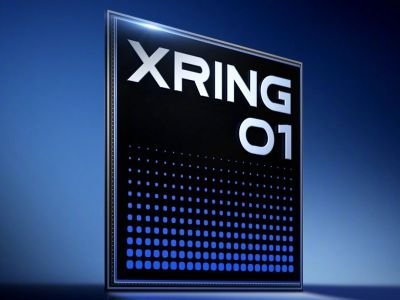An image showcasing the silicon die (crystal) of Xiaomi’s brand-new XRING O1 processor has surfaced online. This flagship-level chip is fabricated using TSMC’s advanced second-generation 3-nanometer (nm) N3E process technology, the same node utilized for the Apple A18 Pro. The total die area measures 114.7 mm², with an active area of 109.5 mm², making it one of the most physically compact flagship SoCs currently available.
The XRING O1 integrates a 10-core CPU in a quad-cluster configuration: two high-performance Cortex-X925 cores, six Cortex-A725 performance cores, and two power-efficient Cortex-A520 cores. The CPU also features a substantial 16 MB of L3 cache. In benchmark testing, the chip achieves impressive scores: approximately 3119 points in Geekbench 6’s single-core test and up to 9673 points in the multi-core test. Graphics processing is handled by a 16-core Immortalis-G925 GPU, which demonstrates strong performance, reaching up to 330 frames per second (fps) in the GFXBench Manhattan 3.1 benchmark. Additionally, the SoC includes a dedicated Neural Processing Unit (NPU) with a claimed performance of 44 TOPS (Tera Operations Per Second) for accelerating AI tasks.
A notable design choice for the XRING O1 is the absence of an integrated 5G modem. Instead, Xiaomi has opted for an external modem solution provided by MediaTek. While this decision likely contributed to the chip’s reduced die size, some experts speculate that it could potentially have a negative impact on overall energy efficiency due to the separate components. Interestingly, it has also been reported that Xiaomi currently has no plans to release devices powered by its in-house processors outside of the Chinese market.
The Xiaomi 15S Pro smartphone and the Xiaomi Pad 7 Ultra tablet are the first devices to feature this new XRING O1 processor, marking Xiaomi’s entry into the high-end mobile chipset arena.

